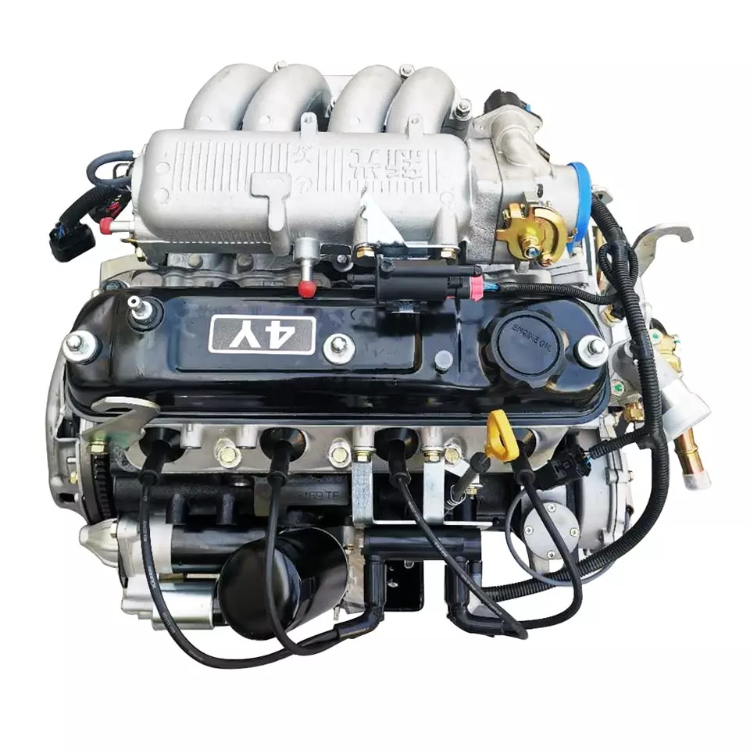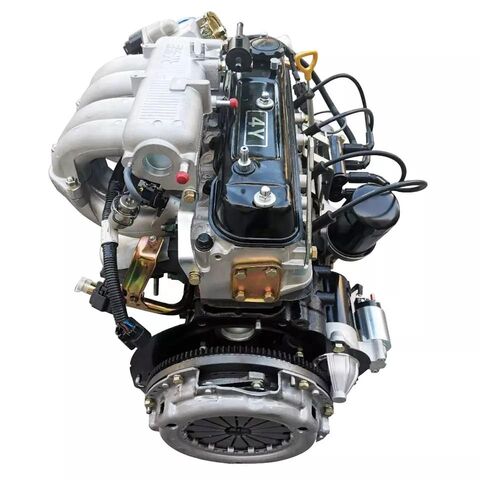Everything You Need to Know About the 4Y Engine and Its Performance
Everything You Need to Know About the 4Y Engine and Its Performance
Blog Article
Why the Engine Is the Best Selection for Performance and Performance in Your Cars And Truck
The engine stays a crucial part in automotive design, mainly due to its substantial impact on both efficiency and efficiency. As advancements in technology allow smaller engines to provide exceptional power while maximizing gas economic situation, the integration of functions such as turbocharging and hybrid systems ends up being progressively crucial.
Comprehending Engine Types
Comprehending the numerous sorts of engines is important for optimizing performance and effectiveness in vehicle layout. The primary engine kinds include inner burning engines (ICE), electric engines, and hybrid systems, each offering distinctive benefits and limitations.
Internal burning engines, which can be more classified into fuel and diesel versions, rely upon the combustion of gas to produce power. Gas engines commonly offer greater RPMs and much better velocity, while diesel engines are known for their torque and fuel effectiveness, making them suitable for durable applications.
Electric engines, on the other hand, utilize electrical motors powered by batteries or gas cells. They use immediate torque delivery, resulting in smooth velocity and lower emissions. The efficiency of electric engines is substantially more than that of ICEs, making them a prominent selection for eco-conscious customers.
Crossbreed systems integrate both inner combustion and electrical engines, leveraging the staminas of both technologies. They enhance gas consumption by utilizing electrical power at reduced speeds and switching to fuel or diesel for higher rates or heavier loads.
Picking the appropriate engine type is vital for achieving preferred performance metrics and ecological sustainability in contemporary vehicle design.
The Impact of Engine Size
Engine dimension regularly plays a critical duty in identifying an automobile's efficiency and efficiency. Generally gauged in liters or cubic centimeters, engine dimension directly affects the power outcome and torque attributes of a car. Larger engines typically create more horse power, allowing better velocity and higher top rates. This is specifically advantageous in applications needing durable efficiency, such as cars and sturdy vehicles.
However, raised engine dimension usually correlates with reduced gas effectiveness. Smaller engines can provide sufficient efficiency for daily driving while advertising far better effectiveness, making them a preferred choice in mid-size and compact automobiles.
Additionally, innovations in engine layout, such as turbocharging and straight fuel injection, allow smaller sized engines to accomplish power degrees equivalent to their larger counterparts. This pattern stresses the value of not entirely concentrating on engine size but likewise thinking about overall lorry style and modern technology (4y engine). Ultimately, the influence of engine size on efficiency and performance underscores the need for consumers to evaluate their particular driving choices and needs when selecting an automobile
Advanced Engine Technologies
Advancements in engine technologies have actually dramatically reshaped the landscape of automobile performance and performance, structure upon the fundamental ideas developed by engine dimension. Especially, improvements such as turbocharging and direct fuel shot have made it possible for smaller sized engines to provide power levels previously related to larger counterparts. Turbochargers compress air going into the engine, permitting increased power outcome without a matching rise in engine dimension, while straight injection maximizes gas distribution, enhancing burning performance.
In addition, variable shutoff timing systems have actually arised as a crucial innovation, permitting engines to adjust valve procedure based on driving conditions. This adaptability boosts both efficiency during velocity and gas performance during cruising. Crossbreed and electric engine innovations additionally show the change in vehicle layout, integrating typical internal burning engines with electric motors to make best use of effectiveness while lowering discharges.
In addition, advancements in materials science have actually led to lighter, much more resilient engine components, better boosting performance and long life. The assimilation of advanced electronic devices and engine control systems also enables real-time changes, ensuring ideal efficiency across different problems. Collectively, these innovative engine modern technologies not just boost vehicle performance yet also add to a more lasting vehicle future, showing the continuous evolution of engine style.
Harmonizing Power and Efficiency
Striking an equilibrium in between power and effectiveness is important in contemporary automotive layout as makers look for to satisfy increasingly strict discharges policies while satisfying customer need for performance (4y engine). The difficulty depends on maximizing engine features to visit this website deliver robust power outcome without giving up fuel economic climate
To accomplish this equilibrium, designers utilize different strategies, such as turbocharging, which improves engine power forcibly in more air, enabling a smaller sized engine displacement that enhances fuel effectiveness. Variable shutoff timing technologies likewise play a substantial duty, making it possible for engines to readjust their performance characteristics based upon driving problems, thus enhancing both power and effectiveness.
Furthermore, innovations in products and manufacturing methods have actually caused lighter engine parts, which decrease general lorry weight and boost fuel performance without jeopardizing power. Hybrid modern technologies have additionally become a practical remedy, incorporating standard inner combustion engines with electric powertrains to offer an increase in efficiency while preserving reduced emissions.

Future Trends in Engine Design

Furthermore, the development of innovative materials, such as high-strength alloys and light-weight compounds, is set to revolutionize engine elements. These products not only decrease weight however likewise boost thermal efficiency, therefore optimizing efficiency. Additionally, manufacturers are exploring variable compression proportions, allowing engines to adjust to different driving conditions, boosting both power outcome and fuel economy.
Additionally, the rise of fabricated intelligence and device understanding in engine style is making it possible for anticipating maintenance and real-time efficiency optimization. This technology can cause engines that self-adjust for maximum performance based upon driving patterns.

Verdict
In verdict, the engine offers as a vital element in attaining optimum efficiency site here and effectiveness in contemporary cars. The interaction in between engine dimension and layout proceeds to advance, find this driving technologies that balance exciting performance with ecological sustainability.
Furthermore, advancements in engine design, such as turbocharging and direct fuel injection, enable smaller sized engines to achieve power levels comparable to their larger counterparts.Developments in engine technologies have substantially improved the landscape of automotive performance and effectiveness, structure upon the foundational concepts established by engine dimension. Turbochargers press air going into the engine, enabling for raised power output without a corresponding boost in engine dimension, while straight shot maximizes gas shipment, improving burning efficiency.
Crossbreed and electrical engine innovations additionally highlight the change in auto layout, integrating typical internal burning engines with electric motors to maximize effectiveness while minimizing discharges.
Collectively, these innovative engine modern technologies not just enhance automobile performance yet additionally contribute to a more lasting auto future, demonstrating the continuous evolution of engine layout. (4y engine)
Report this page